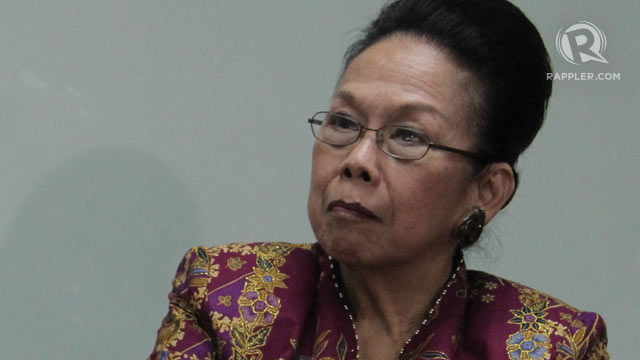SUMMARY
This is AI generated summarization, which may have errors. For context, always refer to the full article.

MANILA, Philippines – Call it controversial, but as far as the Commission on Higher Education (CHED) is concerned, the Disbursement Acceleration Program (DAP) initiated reforms and development efforts in state universities and colleges (SUCs).
The 2011 DAP allocation for SUCs – amounting to P4.28 billion – went to efforts to enhance infrastructure and facilities, and funded research, scholarships, and capacity-building of school officials, Dr Patricia Licuanan, CHED chairperson, said in a statement Tuesday, October 29.
Licuanan said as of September this year, P3.96 billion of the P4.03-billion allotment for infrastructure and facilities has already been released to SUCs, with the bulk of it going to the University of the Philippines (UP) and Mindanao State University (MSU) systems.
The amount, she said, funded “noteworthy” and “high-impact” infrastructure projects for SUCs. The UP system received P1.383 billion, while the MSU system got P1.039 billion for infrastructure.
The Department of Budget and Management (DBM) defended the highly-criticized DAP, saying it was not a bribe for lawmakers who impeached the former chief justice Renato Corona but a program designed to ramp up spending and help accelerate economic expansion.
The releases, DBM added, were mostly for infrastructure projects.
Research and training
For research, development and extension activities (RDE), P560 million has been disbursed to 22 SUCs for the implementation of 128 projects.
With the help of the Philippine Institute for Development Studies, these SUCs will research on social concerns such as climate change impacts and mitigation, disaster science, biodiversity, agriculture and food security, health, alternative sources of energy, and education.
“These projects are expected to produce at least 20 research and development technologies to be disseminated in 500 barangays and to benefit more than 100,000 households in the next 3 years,” Licuanan noted.
Meanwhile, the Development Academy of the Philippines helps conduct short-term training courses for about 800 officials of SUCs, with a budget of P165 million – 60% of which has already been utilized.
“These courses have been designed to enhance their competencies in strategic planning, quality assurance and improvement, develop world class universities, research and development management, extension management, performance-based budgeting, asset development for resource generation and management, among others,” she said.
International standards
P500 million of the DAP allocation, she said, also supports about 4,004 scholars under the Student Grants-in-Aid for Poverty Alleviation scheme. (READ: Carpio: Use DAP for scholars, patients)
The Department of Social Welfare and Development selected the grantees – students from the poorest of the poor households or the Conditional Cash Transfer beneficiary families.
President Benigno Aquino III earlier said the DAP was the stimulus package that helped “thousands of our countrymen.” (READ: Aquino: DAP drove PH’s economic boom)
He also credited the DAP for helping the Philippines “overcome the inertia the economy was experiencing” in 2011, for its 2012 6.8% economic growth, and its 7.6% growth in the first half of 2013.
As for CHED, the reforms initiated by the DAP investment will help the country reach international standards of education spending.
“This is a testament to the government’s commitment to steadily increase investment in education from 2.9% of GDP in 2010 all the way to 4.9% in 2016, thereby reaching the international benchmark spending for education in developing countries,” Licuanan added. – with reports from Natashya Gutierrez/Rappler.com
Add a comment
How does this make you feel?
There are no comments yet. Add your comment to start the conversation.